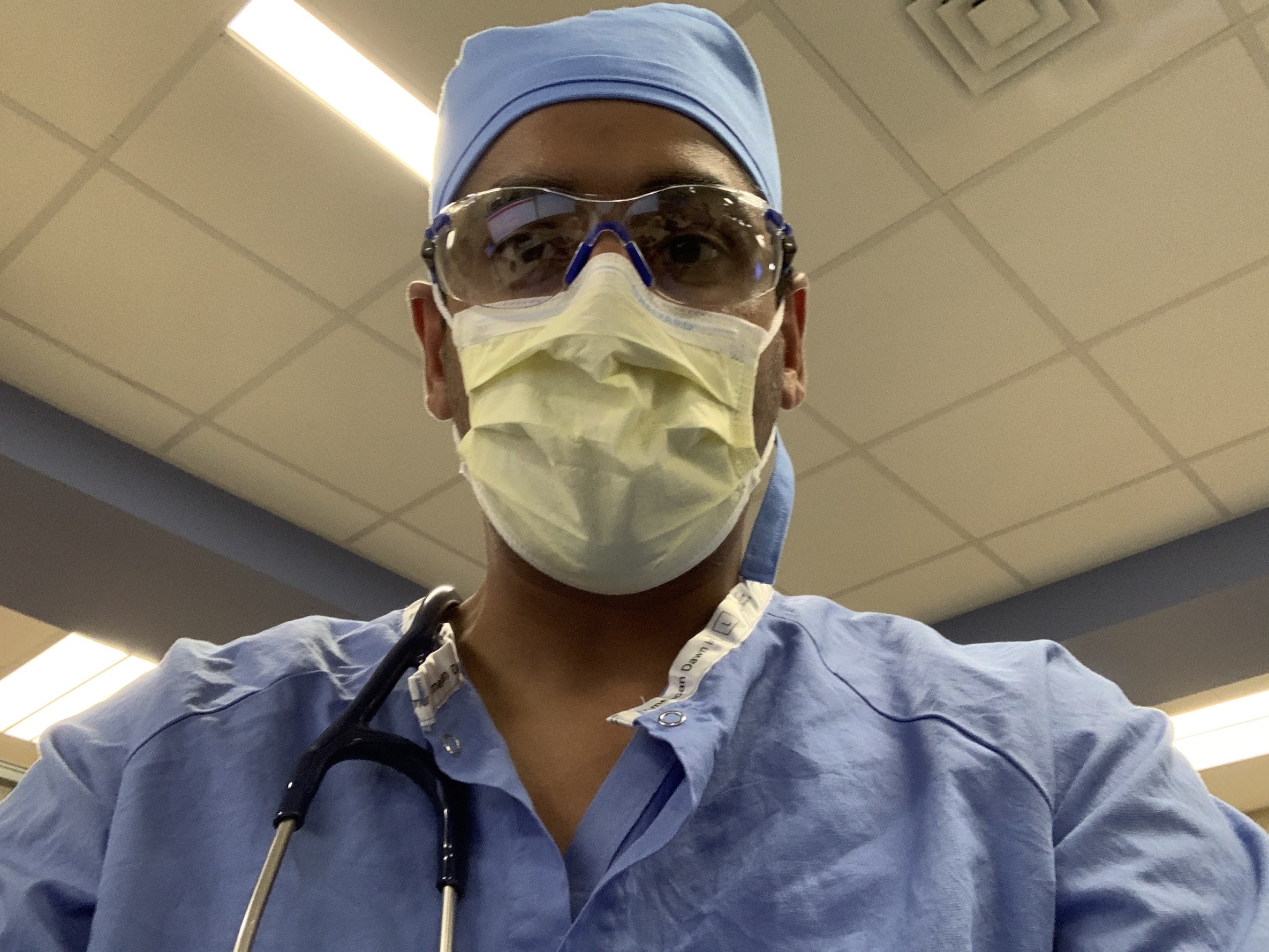
Story
Looking Back at Lockdown
An interview with Dr. Ramnik Dhaliwal about the early days of the COVID-19 pandemic.
Around this time three years ago, many of us were just emerging from a months-long lockdown. We were trying to keep ourselves safe from Covid-19, then a largely mysterious and terrifying new disease. Daily life in Colorado and countries around the world was far from normal. Many of us lost loved ones. Many of us worried our lives would never be the same again.
Meanwhile, Dr. Ramnik Dhaliwal was trying to figure out how to keep himself and his family safe while working to save lives. Recently, Dr. Dhaliwal donated his hospital gear from those early days, including his personal protective equipment (PPE), to History Colorado's collection. His donation includes masks and surgical gowns he bought to protect himself and his family at a time of uncertain availability.
He also included candid photos from the emergency departments of several Denver-area hospitals where he was working, video diaries recorded at the hospitals and at home in the first months of the pandemic, and this reflective interview in the hope that future generations will be able to appreciate the sacrifices health care providers and front line workers continue to demonstrate as the world recovers from Covid’s upheavals.
We sat down with Dr. Dhaliwal to recall those early days of the pandemic:

Dr. Ramnik Dhaliwal wearing the protective equipment he bought to protect himself and his family from Covid-19 in the early days of the pandemic.
What was it like being a doctor in the emergency department three years ago?
At first it was unclear what this was. We knew it was a viral infection, but it was spreading like gangbusters. Practically overnight, we went from normal caseloads and seeing the usual gamut of patients to being fearful of going to work. Very quickly, the question became how do I protect myself? That’s when I decided to start buying my own personal protective equipment. I didn’t want to trust that it would always be available in the hospital.
Many of us lost our normal daily routines during lockdown. What was it like as you kept going to work to help save lives?
My household consisted of myself, my wife who is a pediatrician, our two young children and their elderly grandparents. So my ritual was focused on trying to protect them while still treating the people who needed my help. I put on my scrubs, mask, goggles—a uniform that was already different from what I wore before the pandemic. And seeing patients was different too, because we lost a huge amount of that human interaction due to that distance and that fear. Coming home was the ritual in reverse—I’d have to strip down in the garage, sprint across the yard and hop in the shower before I could hug my kids or say hi to my family.
How has COVID changed your job?
One of the biggest lingering challenges didn’t necessarily come from COVID, but instead from the political divide the pandemic exacerbated. We still see massive and unfortunately growing mistrust of doctors and the medical profession. People requesting treatments that we knew weren’t effective. And a shocking increase in the number of people who posed a physical danger to staff, not just because of the disease they were contagious with. And it has taken a toll on our job. There was a mass-exodus of healthcare workers during the pandemic, and the whole system is still weak. We all had to come to terms with the idea that we could die.
What’s your prescription for collective recovery from the pandemic?
I think people need to think—really think—about others more. The pandemic showed us that we’re resilient, but also that we’re so much more resilient together. If we could come together to support our neighbors and essential workers during the worst of the lockdown, why not in better times too?
